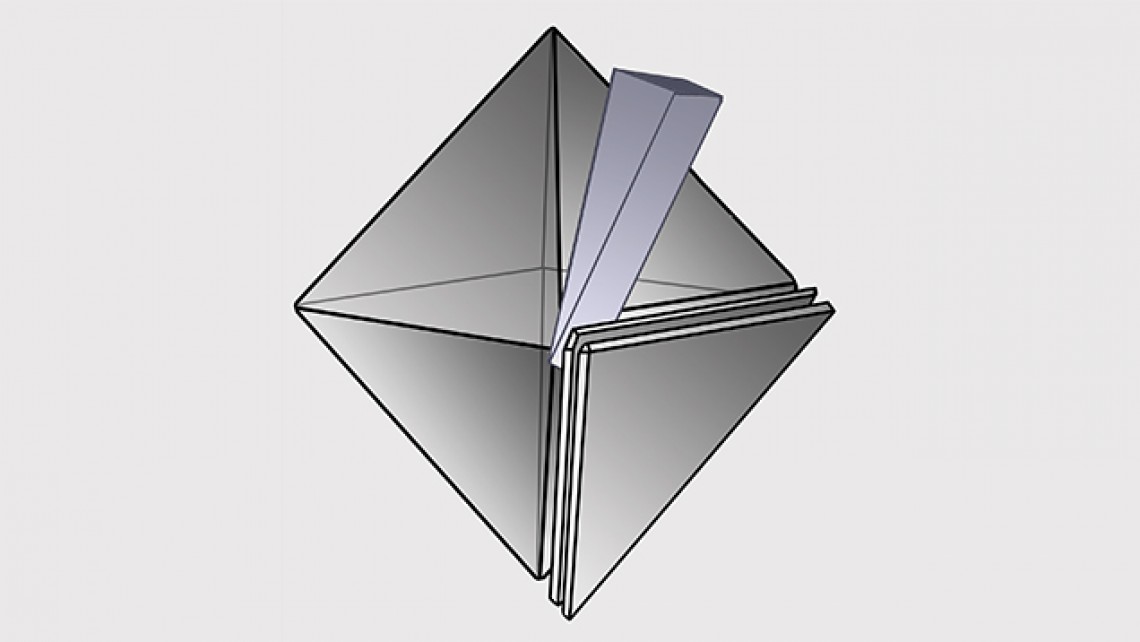
What is Gemstone Cleavage?

What is gemstone cleavage? For those of you with overactive imaginations, we can pause a moment so you can regain your composure before we continue.
We’ll start with a brief mental illustration to give you a better idea of gemstone cleavage. Imagine chopping firewood. A log will split much easier along its grain than across it. Now picture a gemstone being split in the same way. A gemstone is easier to split along its grain, or cleavage, just like a piece of wood.
Gemstone Cleavage - The Science
Gemstones have a crystalline structure and most of these structures have a definite plane where the atomic bonds are weaker making the crystal easier to break. These planar surfaces indicate the gemstone’s cleavage. The better the cleavage, the higher the likelihood the gemstone will be smoothly cut along this plane.

In the picture above you see a piece of Mica which has perfect cleavage that runs parallel to the base. If you take a knife and cut it parallel to it’s cleavage plane you will get perfect piece of Mica. If you cut it in the opposite direction it will be much more difficult.
The Grades
Gemstone cleavage is broken into six (6) grades: none, poor, good, distinct, excellent, and perfect. Diamonds, for example, are considered to have perfect cleavage and must be handled with care during the cutting and setting process. Diamonds belong to the cubic system where the raw crystals look like two pyramids stuck together. If you strike a Diamond parallel to this plane it will sheer of perfectly leaving no sharp edges behind.

Gemstones such as rubies and opals, on the other hand, have no cleavage making them more resistant to fracture.
It should be noted that there is a difference between cleavage and a fracture. Cleavage can be predicted as it occurs along a definitive plane of a gemstone. Cleavage can be repeated depending on the number and direction of these planar surfaces. Fractures are very different. They are random and arbitrary and cannot be repeated. These breaks happen anywhere on the mineral and in any direction.
What Gemstones Have Cleavage?
There are many gemstones that have cleavage but below are a lst of the most common ones to be aware of
Diamond
Fluorite
Hiddenite
Kunzite
Topaz
SHOP FOR YOUR OWN GEMSTONES
Search the Gemstone Encyclopedia
Related Auctions
Related Articles
Originally the Birthstones or gemstones were associated with a zodiac sign or the month of a individuals birth. Find out what your stone is and view the stones we have for sale
8th Feb 2021
There are so many tools on the market for testing a gemstone, but what are the main tools required for simple analysis. Lets look at four tools for gemstone testing.
4th Mar 2020
Gem Rock Auctions has one of the largest range of Certified Gemstones online. Browse this list of approved gemstone testing laboratories.
24th Jul 2018
Latest Articles
Shortite is a rare mineral and rarer gemstone, usually found as colorless or yellow wedge-shaped crystals. Learn the value, history, and properties of shortite in this guide!
9th Dec 2024
Senarmontite is an uncommon antimony mineral mostly used industrially but occasionally collected as rare gems or pearly crystals. Find out all of the traits, uses, prices, and history of senarmontite.
27th Nov 2024
Tantalite is a group of red, brown, or black minerals containing the rare and valuable element tantalum. Discover the uses, history, prices, and properties of tantalite gemstones in this guide!
11th Nov 2024
Article Categories
How To's is where you will find helpful articles from gem Rock Auctions on how to cut gemstones, select gemstones and buy gemstones.
9 Articles








